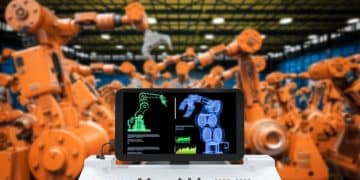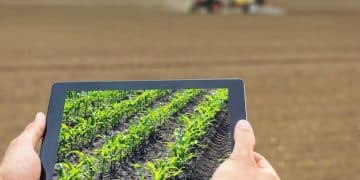US Robotics Industry: Advanced Robots in Manufacturing & Healthcare
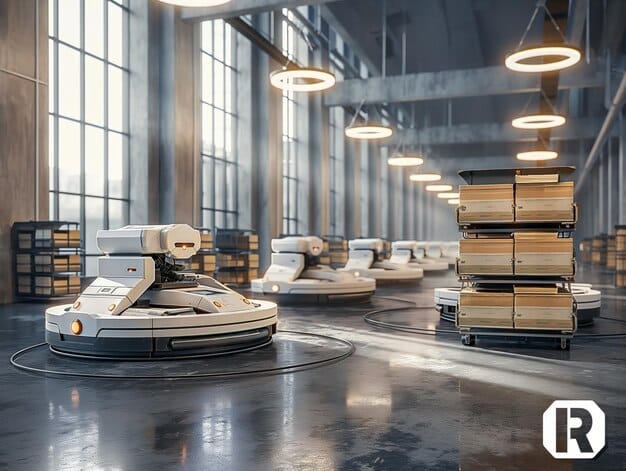
The US robotics industry is experiencing rapid growth, particularly in manufacturing and healthcare, driven by advancements in AI, automation, and the increasing need for efficient and precise solutions.
The US robotics industry: developing advanced robots for manufacturing and healthcare, is undergoing a transformative period. These innovations are revolutionizing how things are made and how care is provided, driving efficiency and improving outcomes.
The Rise of Robotics in US Manufacturing
Robotics has emerged as a key component in modernizing the US manufacturing sector. The integration of robots offers increased efficiency, precision, and the ability to handle tasks that are either too dangerous or too repetitive for human workers.
Efficiency and Productivity Gains
Robots are capable of operating 24/7, leading to significant increases in production output. They can perform tasks with greater precision and consistency, reducing errors and waste. This results in higher quality products and lower overall costs.
Addressing Labor Shortages
The US manufacturing industry has been facing labor shortages. Robots can fill these gaps, particularly in roles that are difficult to fill or have high turnover rates. This helps manufacturers maintain production levels and meet customer demand.
- Improved speed and accuracy.
- Reduced operational costs.
- Enhanced worker safety by handling hazardous tasks.
- Greater flexibility in production lines.
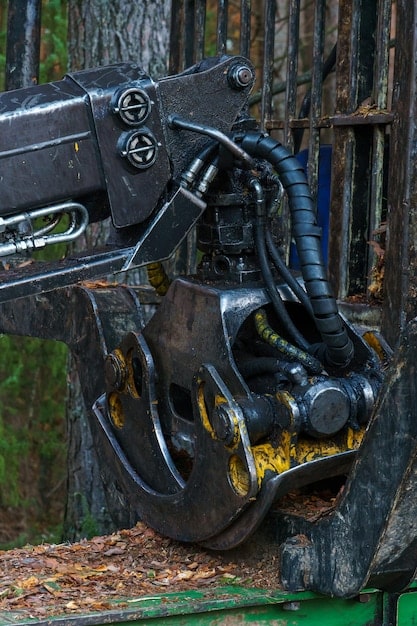
In conclusion, the adoption of robotics in US manufacturing is driven by the need for greater efficiency, productivity, and the ability to address labor shortages. These factors collectively contribute to the modernization and competitiveness of the US manufacturing industry.
Robotics Revolutionizing US Healthcare
The healthcare industry is another sector where robotics is making significant strides. From surgical robots to automated dispensing systems, robotics is enhancing patient care and improving operational efficiency.
Surgical Robotics: Precision and Minimally Invasive Procedures
Surgical robots allow surgeons to perform complex procedures with greater precision, flexibility, and control than traditional techniques. Minimally invasive surgeries result in smaller incisions, reduced pain, and faster recovery times for patients.
Robotic Assistance in Rehabilitation
Robots are also being used in rehabilitation to help patients recover from injuries and regain mobility. These devices can provide repetitive motions and assist with physical therapy exercises, accelerating the healing process.
Consider the ways robotics is transforming healthcare logistics and creating more efficient pharmacies:
- Automated medication dispensing systems reduce errors and improve inventory management.
- Robotic transportation systems deliver supplies and medications throughout hospitals.
- Robots assist in cleaning and disinfection tasks, reducing the risk of infections.
- Robotics are being utilized for remote patient monitoring and telehealth applications.
Robotics in healthcare is not just about replacing human workers; it’s about augmenting their capabilities and improving patient outcomes. As technology advances, we can expect to see even more innovative uses of robotics in the healthcare sector.
AI and Machine Learning Driving Robotic Advancements
Artificial Intelligence (AI) and machine learning (ML) are critical components of the advancements being seen in the US robotics industry. These technologies enable robots to perform more complex tasks, adapt to changing environments, and learn from experience.
Enhanced Perception and Decision-Making
AI algorithms enable robots to perceive their surroundings using sensors and cameras. Machine learning models allow them to analyze data and make informed decisions, improving their ability to navigate complex environments and interact with objects.
Predictive Maintenance and Optimization
AI can also be used for predictive maintenance, analyzing sensor data to identify potential problems before they occur. This helps manufacturers minimize downtime and optimize their operations. ML algorithms can optimize robot performance by adjusting parameters in real-time.
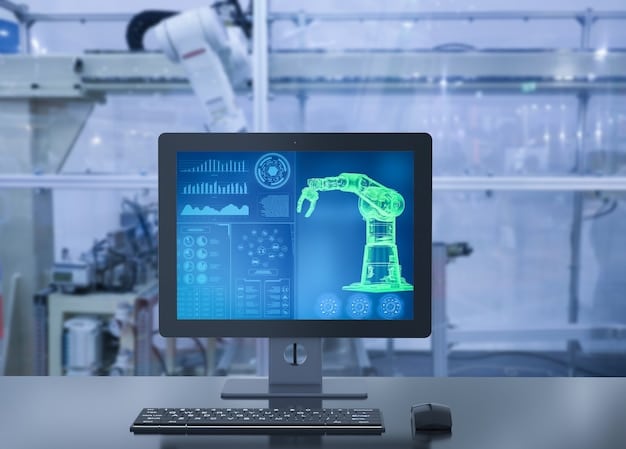
The integration of AI and ML is transforming robots from simple automated machines into intelligent systems capable of performing tasks that were previously thought to be impossible. This evolution is driving innovation across various sectors of the US economy.
Challenges and Opportunities in the US Robotics Industry
While the US robotics industry presents numerous opportunities, there are also challenges that need to be addressed. Overcoming these challenges is crucial to realizing the full potential of robotics and ensuring its widespread adoption.
Job Displacement Concerns
One of the major concerns is the potential for job displacement as robots automate tasks previously performed by human workers. Addressing this requires investment in education and training programs to help workers acquire new skills and transition to new roles.
Ethical and Safety Considerations
As robots become more autonomous, ethical and safety considerations become increasingly important. It is essential to develop guidelines and regulations that ensure robots are used responsibly and do not pose a threat to human well-being.
Here’s what to consider when focusing on future research and development that is important to the US robotics industry:
- Investing in research and development to create more advanced and capable robots.
- Developing standards and protocols for robot safety and security.
- Promoting collaboration between industry, academia, and government to accelerate innovation.
- Addressing the skills gap by providing training and education programs.
By addressing these challenges, the US can unlock the full potential of its robotics industry and cement its position as a global leader in innovation and technology.
Investment and Growth Trends in US Robotics
The US robotics industry is attracting significant investment, reflecting the growing recognition of its potential. Venture capital firms, corporations, and government agencies are all investing in robotics companies and research initiatives.
Venture Capital and Private Equity
Venture capital firms are investing heavily in robotics startups, seeking to capitalize on the industry’s growth potential. Private equity firms are also acquiring established robotics companies, looking to expand their market reach and improve their operations.
Government Funding and Initiatives
The US government is supporting robotics research and development through grants, contracts, and other initiatives. Agencies like the National Science Foundation (NSF) and the Department of Defense (DoD) are funding projects aimed at advancing robotics technology.
In summary, investment and growth trends are closely tied to the increased adoption rates in various sectors:
- Healthcare robotics are drawing increased investment due to the rapid innovation and adoption.
- Manufacturing robotics benefit from strong government support promoting technological upgrades.
- Logistical robotics are increasingly funded due to the growing e-commerce market in the United States.
- Agricultural robotics are benefiting from private investment as agricultural challenges change.
These trends are projected to continue, driven by the increasing need for automation, technological advancements, and the recognition of robotics as a key driver of economic growth. The US is establishing itself as a hub for robotics innovation and investment.
The Future of Robotics in the US: A Glimpse Ahead
The future of robotics in the US holds immense promise. As technology continues to evolve, robots will become more capable, versatile, and integrated into various aspects of our lives. The industry will likely see major growth over the next decade.
Collaborative Robots (Cobots)
Cobots, designed to work alongside human workers, will become more prevalent in manufacturing and other industries. These robots are equipped with sensors and safety features that allow them to operate safely in close proximity to people. The rise in cobots are slated to increase efficiency and reduce risks of industrial accidents.
Autonomous Mobile Robots (AMRs)
AMRs are expected to play a significant role in logistics, warehousing, and delivery services. These robots can navigate complex environments without the need for fixed infrastructure, making them ideal for tasks like transporting goods within warehouses and delivering packages to customers.
The US is primed to lead in the growth of specialty robotics:
- Development of robots with advanced sensory capabilities and cognitive abilities.
- Increased use of robots in space exploration, agriculture, and construction.
- Greater integration of robots into everyday life, such as in homes and offices.
- Growing demand for skilled professionals in robotics engineering, programming, and maintenance.
As we look ahead, it is clear that robotics will play an increasingly important role in the US economy and society. By embracing innovation, addressing challenges, and fostering collaboration, the US can ensure that it remains at the forefront of the robotics revolution.
| Key Point | Brief Description |
|---|---|
| 🏭 Manufacturing Automation | Robots enhance efficiency, precision, and safety in US manufacturing. |
| 🩺 Healthcare Revolution | Robotics improve surgical precision, rehabilitation, and hospital logistics. |
| 🧠 AI Integration | AI and machine learning drive robotic capabilities and decision-making. |
| 💼 Investment Growth | Significant investment from venture capital, private equity, and government. |
Frequently Asked Questions
▼
Robots improve efficiency and precision on factory floors. Automating dangerous and repetitive tasks increases output and reduces the risk of workplace injuries.
▼
Surgical robots allow for minimally invasive procedures with precision. Patients experience smaller incisions, reduced pain, and faster recovery times while improving surgical outcomes.
▼
AI enables robots to perceive, learn, and adapt. Applying AI enables smarter decision-making and more efficient operations. This leads to better performance in complex environments.
▼
Challenges include concerns about job displacement. Overcoming these involve focusing on ethics and safety, as well as addressing the growing skills gap in the workforce.
▼
Growth trends include investments in collaborative robots. Also, as robots become autonomous, major advancement are expected. Robots will continue to be integrated into logistics, homes, and space exploration.
Conclusion
The US robotics industry: developing advanced robots for manufacturing and healthcare, stands on the cusp of a new era, driven by technological advancements and increasing demand. With strategic investments and a focus on innovation, the US is poised to harness the full potential of robotics, ensuring a future of improved productivity, enhanced healthcare, and sustained economic growth.
